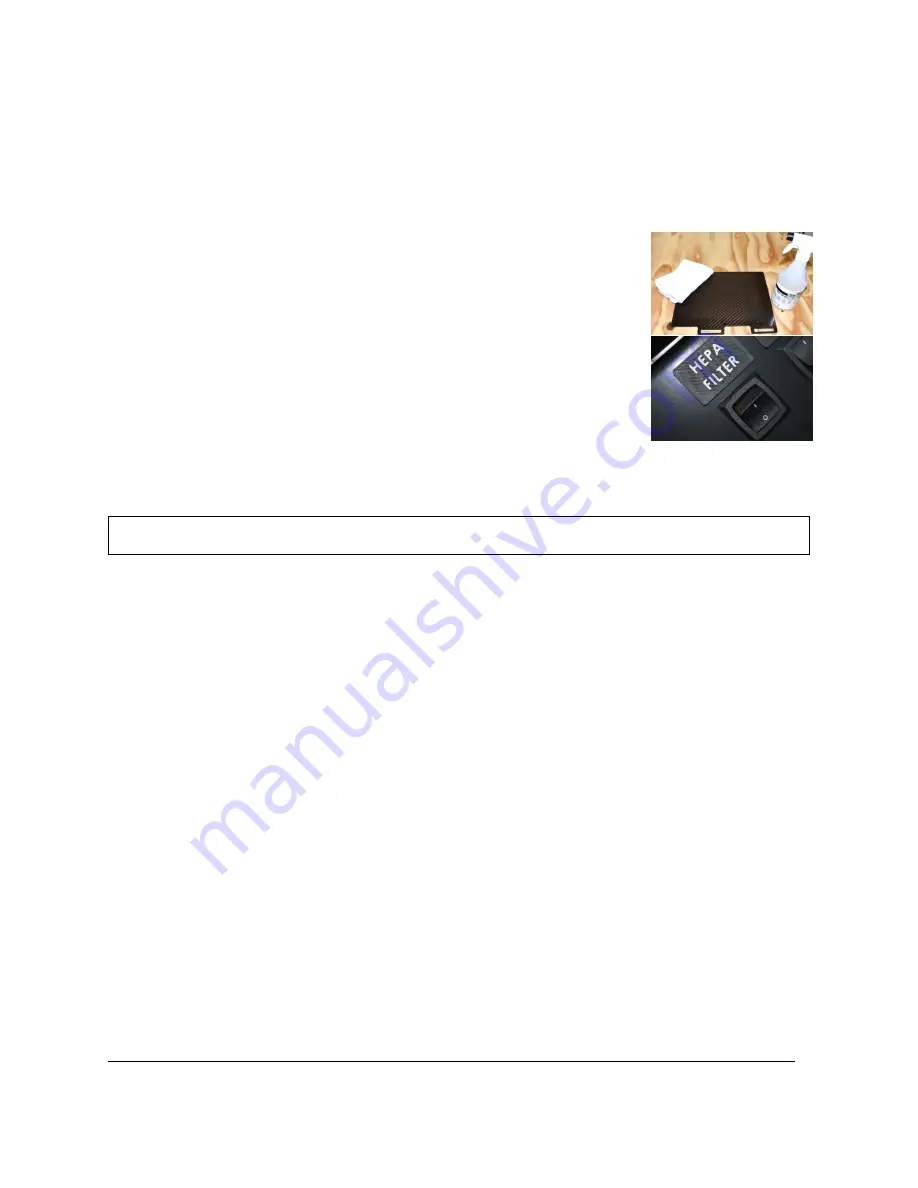
93
TRAK Machine Tools
Southwestern Industries, Inc.
32240 - Printer and MMS - Installation & Printing Guide
5.6
Post Printing
Once your print is finished, there are a few recommended Post-Printing steps that we recommend.
5.6.1
Wait for Build Plate to cool
We recommend letting the print cool down inside the print chamber before attempting to take it off the
build plate. Most prints, should slide right off. If they don't, a small nudge with your finger should be
enough.
5.6.2
Wipe Build Plate with Alcohol
We recommend wiping the build plate down with 90 percent or more
denatured alcohol after every print if there is any residue. Simply apply a light
mist or dampen cloth and wipe down the print surface thoroughly. If print
surface ends up wet, allow it to air dry.
5.6.3
Turn HEPA Filter Off
A HEPA Filter is only needed when any filament is purging or printing. Other
than that, you may turn it off.
5.7
Post Processing
Post-processing will vary based on what you want to achieve from your prints. At the very least, you will
need to plan some time to remove the support material from your parts. One type of support material
every part will have, is a raft. The raft will prevent the build material from sticking on the build plate, and
ruining the print.
CAUTION
If you do not print on a raft, you will void the one-year warranty on your Build Plate.
Support Removal
The post-processing that will occur on all of your printed parts. Different types of support:
•
Breakaway Support
•
Soluble/Dissolvable Support
Breakaway support material can be manually removed, using your finger, or tools such as picks.
However, when you’re working with these support materials, consider compatibili
ty. Specific support
materials adhere more effectively to some build materials than others.
Most soluble/dissolvable supports will require submerging the entire part in a solution, so keep that in
mind when choosing soluble support. Using soluble supports is hands-
free and doesn’t require further
sanding and polishing to remove the marks left by supports. This process can be time-consuming (taking
several hours), but can be sped up by agitating the water (for some support materials).
Additional Post Processing
You may choose other types of post-processing, which include sanding, gluing, painting and inserts.
Specific procedures and steps depend on your individual part needs and requirements; therefore, we
have not included any procedures.


































